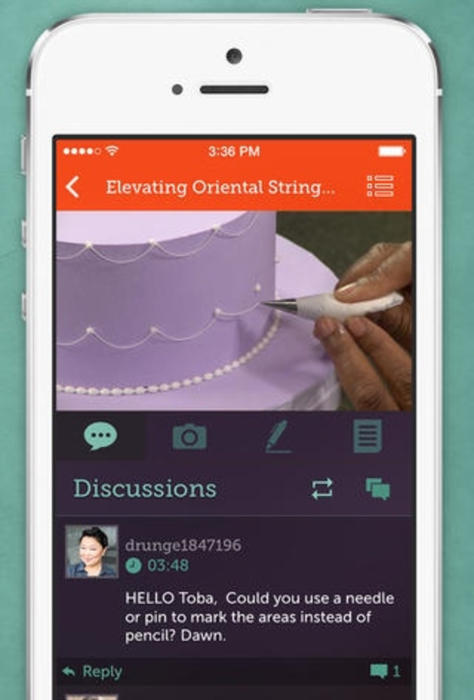Client: Craftsy
Vendor: Urban Airship
Objective: Engage users by sending targeted, relevant content through mobile push notifications.
The Back Story: There’s an ironic twist in the term “mobile push”: If marketers do it wrong, they’ll end up pushing customers away. But if marketers do it right, they’ll actually pull consumers closer.
One brand that truly understands the nuances of mobile push and pull is Craftsy, which provides free and premium video classes and tutorials to crafters who quilt, knit, sew, decorate cakes, and create other handicrafts via Craftsy.com and through the brand’s iPad and iPhone apps.
But there’s no such thing as a crafting emergency to prompt push notifications, Chandler Koglmeier quips. “There’s very little in the crafting world that must be pushed right now,” says Koglmeier, the company’s product manager for mobile, tablet, and emerging devices. “We’re cognizant of that and always cautious.”
That’s not to say users aren’t interested; they most certainly are—but only in content that applies to them. That’s where smart segmentation comes into play.
The Solution: Craftsy implemented tools from mobile marketing service provider Urban Airship to create a more engaging in-app user experience.
The first step was to start slicing and dicing user information into segments and then target each set of consumers with information about relevant classes. The company also updated its customer profiles with new customer data every evening using Urban Airship tools. The more information Craftsy could collect about its users (e.g., purchase history and life cycle stage) via the app, the better Craftsy could tailor and target those push notifications—and the more likely users would be to engage and return. The experience created a sort of positive feedback loop between Craftsy and its customers.
“You want to be aggressive when trying to get people to engage, because the more they engage the more you can personalize and get back to them with an even better experience,” Koglmeier says.
Using that customer data, Craftsy created and sent tailored push notifications, including links to rich in-app landing pages, to its most active members. For example, if a user has taken several pizza- and pasta-making classes, she might receive a push notification about a new Italian cooking class over the weekend, when she has time to view it—rather than pushing the message in the middle of a workday, when the user is apt to either ignore it or be annoyed.
Push isn’t for everyone, and Craftsy only uses it with about half of its app audience. The targeting engine that powers Craftsy’s push messaging is also used to send targeted communications to users who have opted out of push. Messages reach those users through an app message center, which functions similarly to an email inbox. The tool also retains push information for those who later decide to opt in and receive push notifications.
Mobile push success lies in creating an optimal blend of messages and timing that serves the company’s objectives, while also providing surprise-and-delight moments for customers. “If you view push messaging as interruptive, that’s the right point-of-view,” says Urban Airship CMO Brent Hieggelke. “Sending out messaging that shows up right on the screen and stops users in their tracks needs to be valuable and the kind of thing they’ll actually appreciate receiving.”
Users are appreciative of push if it’s personalized, Hieggelke adds. “Marketers today tend to think they can just turn on push and broadcast their messages to everybody whenever they want—but that’s a three-year-old mentality,” he warns. “You can send more push if it’s personalized because it feels helpful to the user and people do appreciate it; what they don’t appreciate is annoying, irrelevant, interruptive cookie-cutter push.”
The Results: Within five months of implementing push, Craftsy doubled its revenue and saw a 20% increase in the number of users accessing video classes on their mobile devices. To date, the Craftsy app has been downloaded more than one million times.
The Takeaway: Clearly, push is potent—but according to recent research from mobile marketing company OtherLevels, just 31% of retailers actually send push notifications to users who have opted in to receive them.
Hieggelke, who notes that he still sees a marked lack of mobile maturity in many brands, says he’s not all that surprised at that modest percentage.
“A lot of [marketers] ask for personalized data—[but] they’re not using that, either,” Hieggelke says. “Marketers are still wrestling with the best way to handle mobile, but the best advice I could give is to just roll up your sleeves and get started.”








